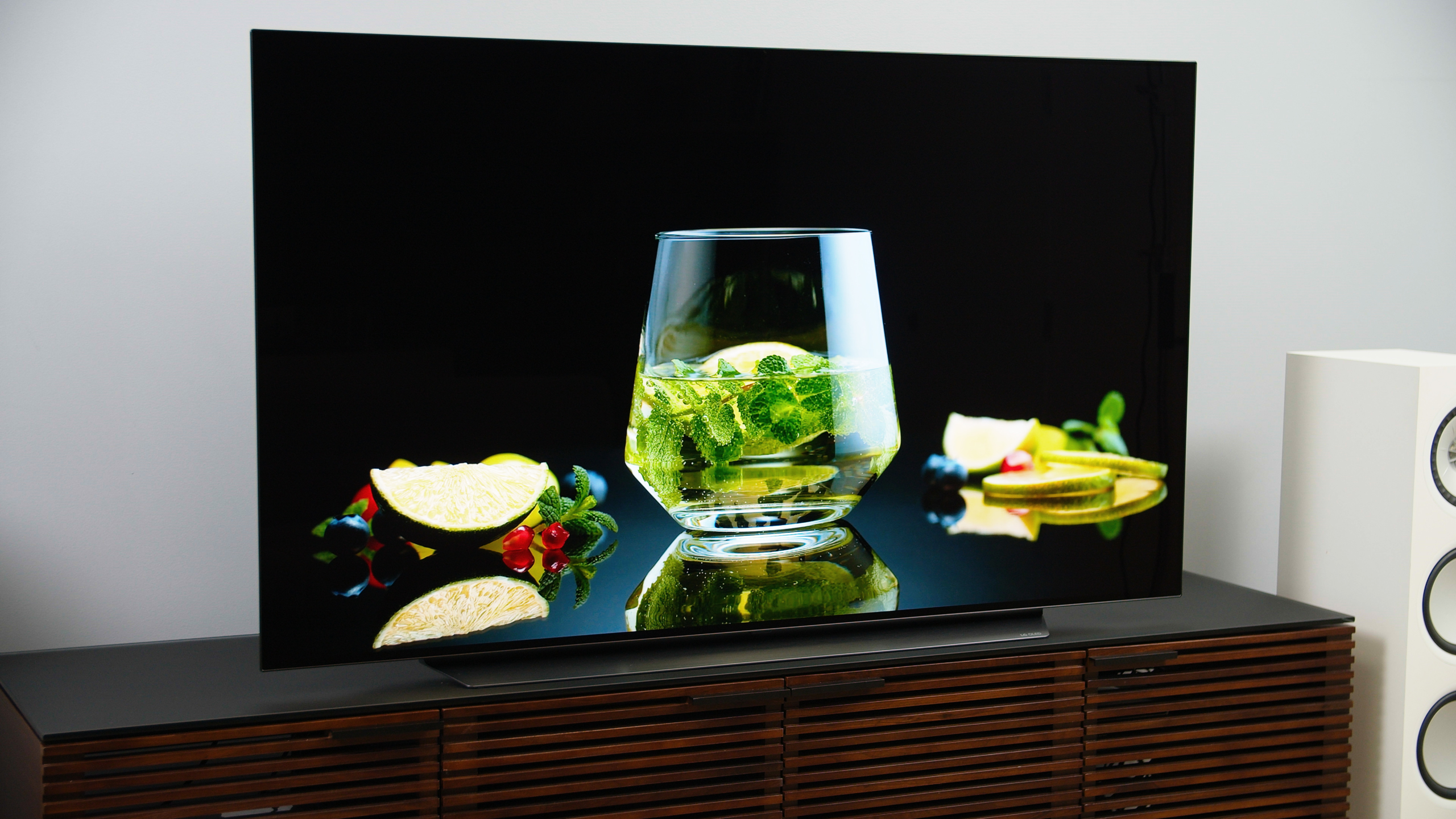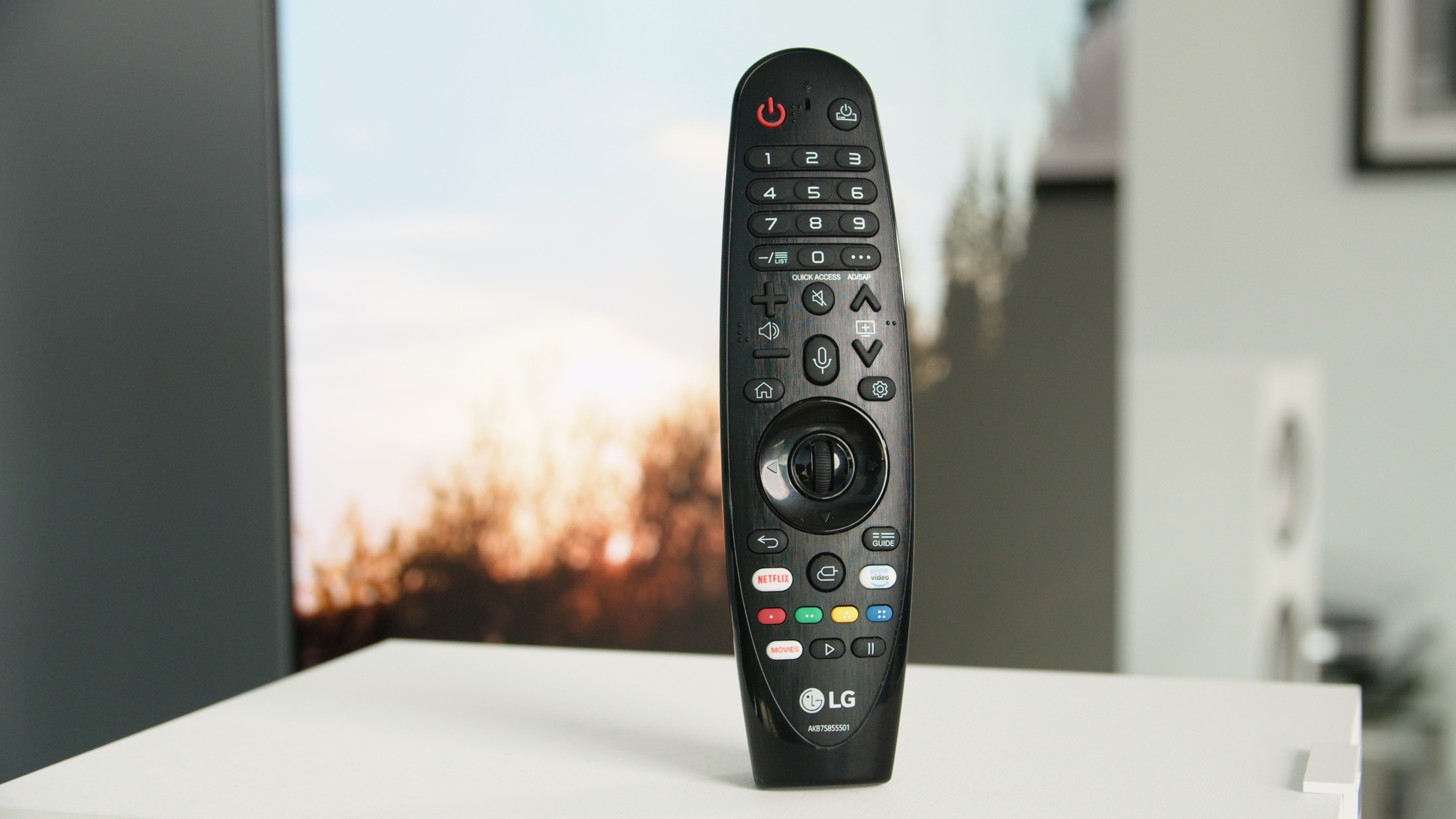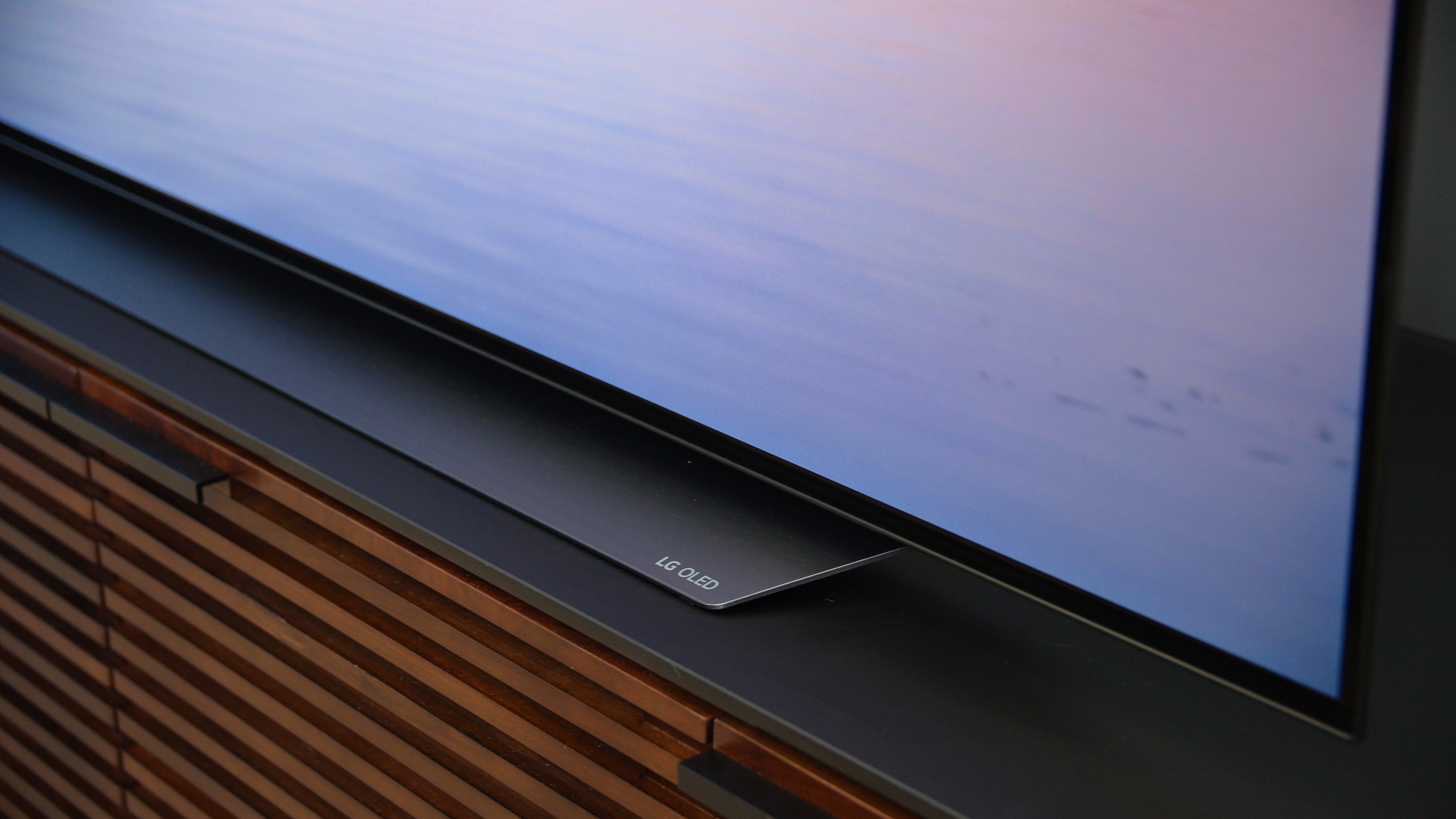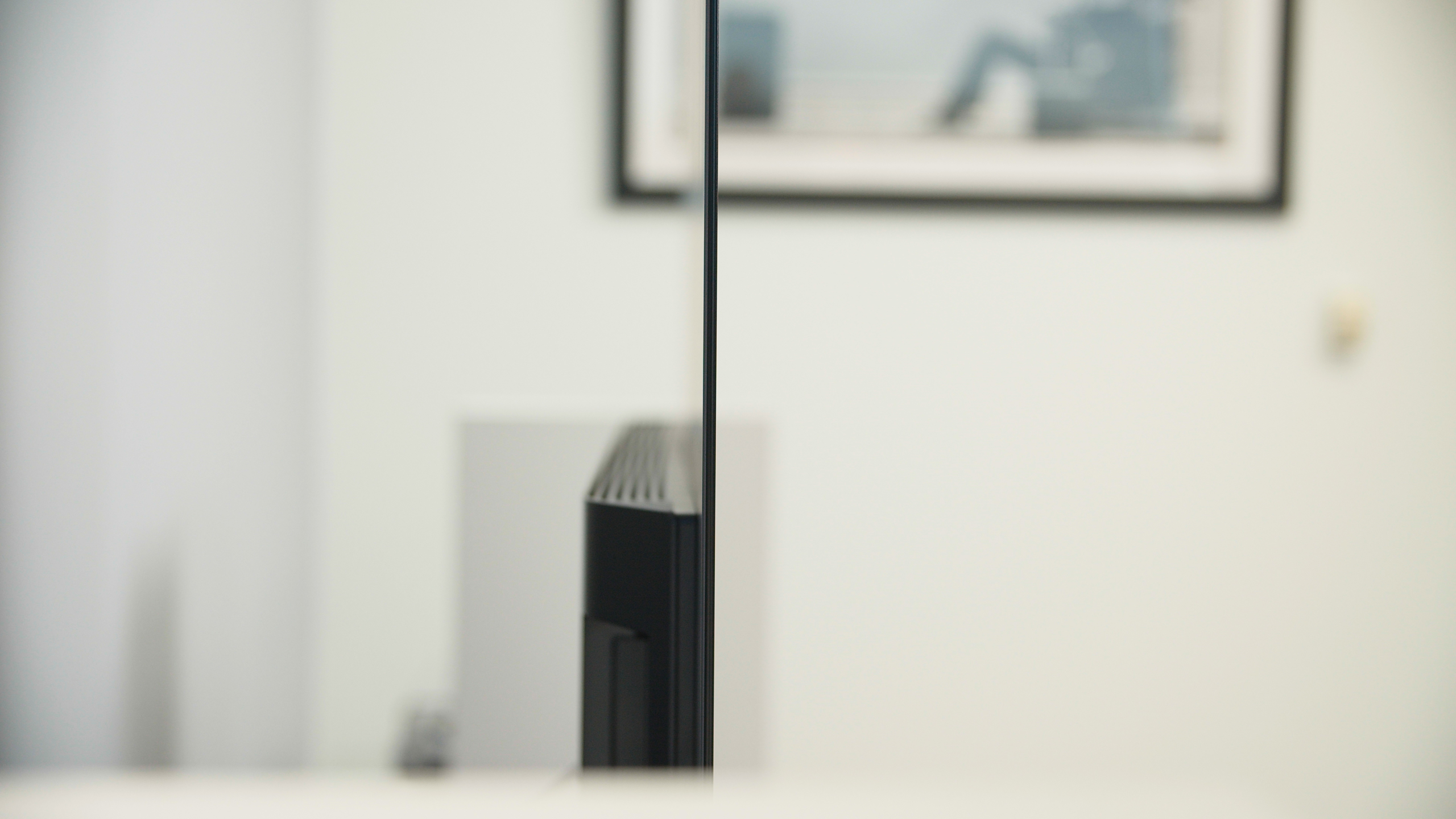
- Superb picture quality
- Solid HDR performance
- Attractive design
- Four HDMI 2.1 inputs
- Next-gen gaming compatible
- Limited potential for burn-in
LG’s 2019 C9 OLED TV was an incredibly compelling TV. It still is. Going into this review, it was hard to imagine that I could say anything more about its successor, the CX. Should I just copy and paste the C9 review here and call it a day? Of course not. Not only would that be lazy, but there are a few differences worth talking about. Plus, dwindling supplies of the vaunted C9 are going to run out any day now.
I didn’t want this review to become a debate over whether you should or shouldn’t consider buying a C9 OLED versus a CX. But that very discussion continues online in YouTube comment sections and various TV forums, so I will address it now. If you can find a C9, that’s fine. It needs a firmware update to deal with some advanced gaming issues, but it does have a set of full 48 Gbps
The biggest question, I think, is whether the CX OLED is the best 2020 TV you can buy. Let’s see if we can get that answered.
LG CX OLED TV details
| Screen Size | Model Number | MSRP |
| 48-inch | 48CXPUB | $1500 |
| 55-inch | 55CXPUA | $1647 |
| 65-inch | 65CXPUA | $2,200 |
| 77-inch | 77CXPUA | $3697 |
Out of the box
The LG CX OLED TV looks exactly like the C9, which is to say it is astonishingly thin and sleek.
The CX’s brushed metal stand swoops down from the bottom of the TV to provide a stable base for stand placement while pulling double duty as an audio enhancer by directing the sound from the CX’s down-firing speakers out toward the listener.
The stand is extremely heavy and a little bit of a hassle to install, as I point out in this unboxing and setup video, but it is rock-solid, highly functional, and looks slick as well, so I’m giving LG a pass on what was a relatively minor setup frustration.
Included in the box with the two-piece metal stand and associated screws are several leaflets of product literature, a plastic cover for cable management, a composite video/audio breakout cable for connecting that Nintendo Wii you broke out of storage in the age of COVID, a pair of batteries, and an LG Magic Motion remote control. Let’s talk about that remote.
I used to love the Magic Motion remote. I also used to love playing Nintendo Wii, but as some relationships age, the passion subsides, and I’m now ready for LG to come up with a more modern remote. I used to find using Wii-style hand-waving motion fun and helpful, especially when entering numerous usernames and passwords into streaming apps. Now I just find the constantly appearing cursor an annoyance. Perhaps I’m just being a salty TV reviewer, though.
Now a quick word on setup.
Picture settings
The good news is that the LG CX OLED has many excellent picture setting presets. The bad news is you have a fair amount of work ahead of you to get the best setting applied to each HDMI input and to streaming apps.
The process starts with the initial setup of the TV, where LG’s WebOS will take you through a setup wizard. During this process, I would suggest declining to turn on any of the A.I.-related picture and sound options. You can always play around with those later after getting some good baseline settings.
Of the many picture setting presets, I prefer ISF Expert Bright Room. If you purchase the CX OLED for a dedicated home theater space that’s plenty dark all the time, consider the ISF Expert Dark Room option, but definitely toggle between each to see what you prefer.

Getting that picture setting applied everywhere it needs to be will take some time. I suggest playing a non-
The next move is to load up a
It’s worth double-checking that Trumotion is either turned off, or set to the user setting with both slider bars reduced to zero. This will help avoid Soap Opera Effect.
At this point, any HDMI inputs will need to get the same treatment. Start with SDR content (cable, a DVD, a standard Blu-ray disc, or the home screen on a game console) and pick your chosen picture mode. Do the same with
Under the hood
What makes LG’s OLEDs look different than its competitors (which all use LG’s OLED panels) is its processing. In this case, LG is up to its Alpha 9 Gen 3 processor, and that processor is very, very good. Sony is LG’s only real rival when it comes to processing at present, but Vizio now offers an OLED in the U.S. and has promised top-notch processing — we’ll see how that turns out soon enough.
This TV was optimized for gaming.
The most notable (and among enthusiasts, controversial) LG CX OLED feature is its inclusion of four
Is that limited bandwidth a big deal? Not for the overwhelming majority of users. But some hardcore PC gamers may find it occasionally limiting if they are trying to max out the use of their new Nvidia RTX 30XX Ampere gaming cards.

Which brings me to my next point: This TV was optimized for gaming in a partnership between LG and Nvidia. I recall meeting with Nvidia representatives when I flew to LA to review LG’s 8K OLED last year, and at the time, my reaction to news of the partnership was, shall I say, lukewarm. Today, however, with the arrival of Nvidia’s revolutionary new graphics cards and the pending arrival of next-gen
But does it work?
Gaming
Nvidia’s RTX-30xx Ampere graphics card launch was anything but smooth. The cards sold out in record time. But those who did receive them (including review outlets like Digital Trends) were eager to see how they worked with LG’s
Users reported pictures going to black when trying to push the graphics cards up to

Regardless, the firmware update is now available and we were able to implement it and test the CX OLED with the fixes in place.
In short, the gaming experience is glorious.
More good news is that the CX did a great job upscaling 1080p and 1440p content up to
Aside from there being no screen tearing and no frame stutter, the
My only complaint is that some extremely dark scenes made it difficult to see in the shadows. This won’t be a big problem for most players, but competitive gamers may find darker games troubling since it can be difficult to see your enemy lurking in the shadows.
I have to give credit to LG for getting its firmware fix implemented quickly and for the overall gaming performance of the CX OLED series. I am extremely impressed.
Picture quality
LG’s OLEDs still produce some of the best picture quality you can buy. Sony’s A8H provides some strong competition, and I expect Vizio’s OLED will also give LG a run for its money, but at the end of the day, the difference among these TVs will be minor and can only be seen when viewing multiple TVs side-by-side.
That is to say, you could never walk into a room, look at LG’s CX OLED, walk out of the room, come back five minutes later, look at Sony or Vizio’s OLED, and expect to see any remarkable difference.
The Sony A8H tends to take a more conservative approach with its rendering of bright

You may also see more shadow detail with the Sony A8H OLED than the LG, but only marginally so. There’s still a bit of black crushing going on with the LG CX OLED which, as mentioned, I think might affect a small subset of gamers who rely heavily on shadow detail in certain games.
In terms of color, LG’s CX OLED is, again, among the best available in terms of saturation and accuracy. It’s almost not worth having this TV calibrated by a professional since the out-of-box experience in Cinema mode is so excellent.
Me, any time I watch LG’s OLED TVs: “Damn that looks good.”
As for motion, again, the LG handles it very well. I prefer a little bit of blur to any hint of soap opera effect, so I leave all motion handling settings off. However, sensitive viewers can turn the de-blur setting up to about two and get smoother fast motion without any significant motion artifacts.
With a picture bright enough to tackle all but the brightest room conditions, excellent black levels, superb color, great motion, and sparkling
Me, any time I watch LG’s OLED TVs: “Damn that looks good.”
Our take
The LG CX OLED is the whole package. Not only does it offer superb picture quality in an attractive package, but it also delivers an awesome gaming experience and more
I’d like to see LG’s WebOS smart TV platform get an overhaul and the TV could sound a little better, but these are minor quibbles compared to the CX’s otherwise awesome stature among the competitive TV landscape.
Is there a better alternative
No. Among OLED TV’s the LG CX is my top pick right now. Sony’s A8H offers a slightly more refined, cinematic picture, but that can only be easily seen in a head-to-head visual comparison. Plus, as I’ve stated, the CX’s gaming prowess is to be admired. The Vizio OLED has yet to make it to my test bench and could provide strong competition, but I doubt it can knock LG off its perch this year.
If you need a scorchingly bright TV, I would suggest the Hisense H9G, Vizio’s P Series Quantum X, and Samsung Q90T as alternatives.
How long will it last?
The CX OLED should last you longer than you’ll need it to. With
Warranty
LG offers a one-year limited parts and labor warranty when purchased from an authorized retailer. This warranty does not cover image retention, also known as burn-in.
Should you buy it?
Yes. If you have the means, buy this TV. The only exception would be for folks who watch the same channel every day, all day, or for folks who play certain games for hours a day, every day, for months on end. These conditions could cause burn-in and for those with these types of viewing and gaming practices, no OLED TV is suitable.
If you want some discounted options, you can also consider the best 4K TV deals available now.
Editors' Recommendations
- Best TCL TV deals: 4K TVs as low as $150
- Best Sling TV deals: Save 50% off your first month and more
- Fubo adds one of YouTube TV’s best features
- The 8 best QLED TVs for 2024
- The best Samsung The Frame TV deals — From just $800








